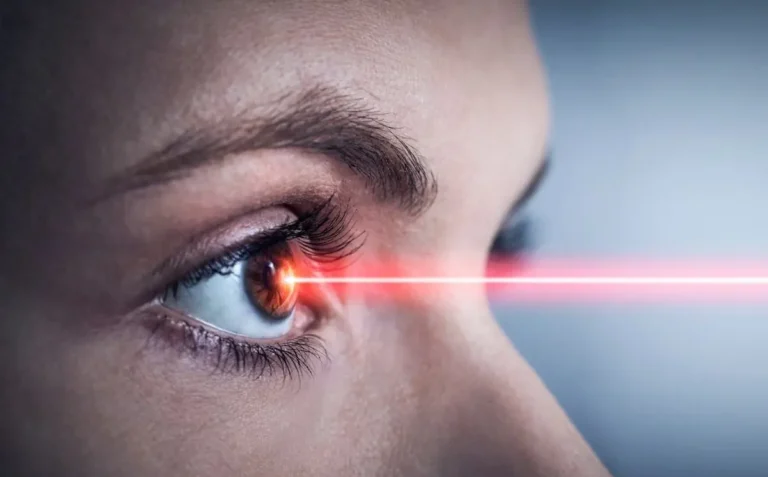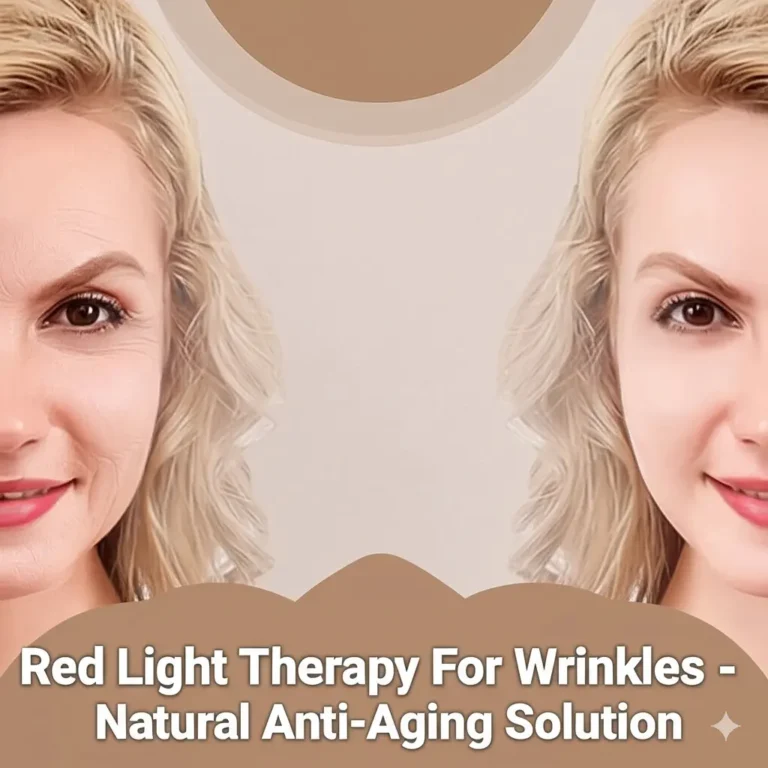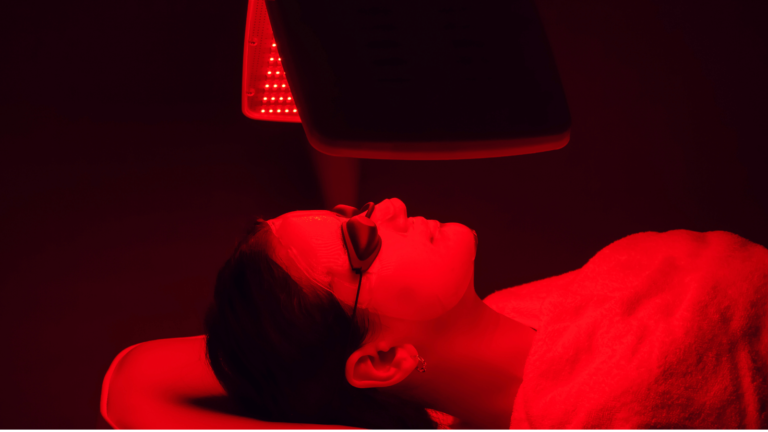Look, I get it. Noticing your hair thinning can be a real gut punch. Maybe you caught it in a harsh bathroom light, or someone tagged you in a photo that made your scalp more visible than you’d like. Whatever the moment was, it probably wasn’t great.
I’ve been there. That panicked Google search at midnight: “why is my hair thinning at 35?” followed by falling down the rabbit hole of potential solutions, some promising, others straight up snake oil.
But here’s some good news in the hair loss battle: red light therapy (RLT) is emerging as one of the most promising non invasive treatments for thinning hair. And unlike some trendy solutions that fizzle out, this one’s backed by actual science.
Let’s dive into everything you need to know about red light therapy for thinning hair, how it works, what to expect, and the best devices to consider if you’re ready to give it a shot.
What Is Red Light Therapy and How Does It Actually Work?
Red light therapy, also known as low level laser therapy (LLLT), uses specific wavelengths of red light to stimulate cellular function. When it comes to your hair, these light waves penetrate your scalp at just the right depth to reach hair follicles.
But what’s actually happening beneath the surface?

When red light hits your hair follicles, it stimulates the mitochondria, essentially the power plants of your cells. This boost increases production of ATP (adenosine triphosphate), which is basically cellular energy. With more energy, your follicles can do their job better.
This process helps:
- Extend the anagen phase (that’s the active growth phase of hair)
- Increase blood circulation to the scalp
- Reduce inflammation that might be inhibiting growth
- Wake up dormant follicles that have stopped producing hair
What makes red light therapy particularly interesting is that it’s addressing hair loss at the cellular level, not just masking symptoms.
7 Compelling Reasons to Try Red Light Therapy for Thinning Hair
1. It’s Scientifically Validated
Unlike many hair loss remedies floating around the internet, red light therapy has substantial clinical backing. Multiple peer reviewed studies show significant improvements in hair density and thickness with consistent use.
One particularly noteworthy study published in the American Journal of Clinical Dermatology found that participants using red light therapy experienced a 39% increase in hair growth over a 16 week period. That’s not marginal, it’s meaningful change.
2. It’s Non Invasive and Painless
Let’s be honest, some hair loss treatments are downright unpleasant. Hair transplants require surgery. Prescription medications can have concerning side effects. In contrast, red light therapy sessions feel like… well, nothing. There’s no sensation whatsoever, except maybe some mild warmth.
3. Minimal Side Effects
While prescription hair loss medications might leave you worried about sexual side effects or other unwanted reactions, red light therapy has remarkably few reported side effects. The most common complaint? Occasional mild scalp dryness. That’s pretty much it.
4. It Complements Other Treatments
Using minoxidil (Rogaine)? Taking finasteride? Red light therapy actually works synergistically with these treatments. Several studies have shown enhanced results when combining approaches, giving you more bang for your buck.
5. It’s Convenient
With today’s at home devices, you can do treatments while watching TV, working at your desk, or even during your morning coffee. Most protocols require just 10 30 minutes a few times per week.
6. Works for Various Types of Hair Loss
While particularly effective for androgenetic alopecia (male pattern baldness), red light therapy also shows promise for stress related hair loss (telogen effluvium) and other forms of thinning.
7. Improves Overall Scalp Health
Beyond just growing hair, red light therapy improves scalp circulation, skin health and reduces inflammation, factors that contribute to healthier hair in general.
The Science Behind Red Light Therapy for Hair Growth
I’m not going to bombard you with technical jargon, but understanding the basic science helps explain why this approach isn’t just another gimmick.
Red light therapy works primarily through photobiomodulation, a fancy term for how light energy affects biological processes. The wavelengths typically used (between 630 850 nanometers) penetrate the scalp at just the right depth to reach the base of hair follicles without causing damage.

Here’s what happens:
| Biological Effect | How It Helps Hair Growth |
|---|---|
| Increased ATP production | Provides more energy for follicle function |
| Enhanced microcirculation | Delivers more nutrients and oxygen to follicles |
| Reduced inflammation | Creates healthier environment for growth |
| Increased protein synthesis | Provides building blocks for new hair |
| Extended anagen phase | Keeps hair in growth phase longer |
This isn’t just theoretical. Microscopic examination of treated areas shows increased hair shaft diameter and follicular density, measurable proof that something positive is happening.
Who Benefits Most from Red Light Therapy for Hair Loss?
While red light therapy can help many people with thinning hair, it works best for certain scenarios:
Ideal candidates include:
- Those in early stages of hair thinning (catching it early always helps)
- People with androgenetic alopecia (pattern baldness)
- Those experiencing stress related shedding (telogen effluvium)
- Individuals looking for a non drug approach to hair maintenance
- Those wanting to enhance results from other treatments
Less ideal for:
- Complete baldness with no visible hair (you need some active follicles)
- Advanced hair loss with significant scalp shininess (indicator of follicle death)
- Those expecting overnight results (this is a marathon, not a sprint)
How to Use Red Light Therapy: The Process Explained
Using red light therapy for hair loss isn’t complicated, but consistency is key. Here’s a typical protocol:
- Choose your device: Options range from full helmets to combs to bands
- Clean your scalp: Treatments work best on clean hair without product buildup
- Position the device: Follow manufacturer guidelines for placement
- Set your timer: Sessions typically run 10 30 minutes
- Maintain consistency: Most protocols recommend 3 4 sessions per week
- Be patient: Visible results typically appear after 3 6 months of consistent use
Many devices now connect to smartphone apps that track your usage and progress, which helps maintain the discipline needed for results.
The 8 Best Red Light Therapy Devices for Thinning Hair in 2025
With so many options on the market, choosing the right device matters. Here are the standouts this year, based on clinical backing, user reviews, and technological innovation:
1. CurrentBody Skin LED Hair Regrowth Device
Why it stands out: FDA cleared with precise 640nm wavelength targeting and Bluetooth connectivity for tracking sessions.
Best for: Tech savvy users who appreciate data tracking and convenience.
Protocol: Just 10 minutes daily, with results typically appearing within 4 months.
Price: $859.99

2. HigherDose Red Light Hat
Why it stands out: Combines optimal 650nm wavelength with an adjustable design that fits different head sizes comfortably.
Best for: Those who prioritize comfort during longer treatment sessions.
Protocol: 20 minute sessions, 3 times weekly, with reduced shedding noticed within 8-12 weeks and new growth at 5-6 months.
Price: $449

3. Aphrona Advanced Hair Regrowth System
Why it stands out: Budget friendly yet still FDA approved, offering excellent value.
Best for: First time users wanting to try red light therapy without a major investment.
Protocol: 30 minute sessions, 3 4 times weekly, with users reporting new growth in as little as 2 months.
Price: $789

4. HairMax Laser Band 82 ComfortFlex
Why it stands out: Unique comb like design that parts the hair for direct scalp contact.
Best for: Those with thicker existing hair that might block light from reaching the scalp.
Protocol: Quick 90 second treatments 3 times weekly, making it ideal for busy lifestyles.
Price: $799

5. Theradome PRO Laser Helmet LH80
Why it stands out: Powerful 680nm wavelength delivery through 80 medical grade lasers.
Best for: Those with more advanced thinning seeking maximum power.
Protocol: 20 minute sessions twice weekly, with clinical trials showing significant density improvement.
Price: $995

6. CapillusUltra Laser Cap
Why it stands out: Discreet cap design with 202 medical grade lasers that can be worn under a regular hat.
Best for: Those who value privacy or want to treat on the go.
Protocol: 6 minute daily sessions, ideal for androgenetic alopecia.
Price: $999

7. illumiflow 272 Laser Cap
Why it stands out: Affordable high diode count (272) at an accessible price point.
Best for: Value conscious shoppers wanting comprehensive coverage.
Protocol: Flexible use of 30 minutes every other day.
Price: $695

8. iRestore Laser Hair Growth System
Why it stands out: Modern full coverage system with 282 medical-grade lasers & LEDs and excellent reviews.
Best for: Those wanting comprehensive hair coverage.
Protocol: 25 minute treatments every other day, FDA cleared for both men and women.
Price: $899

Red Light Therapy vs. Other Hair Loss Treatments: How They Compare
To put red light therapy in context, let’s see how it stacks up against other common approaches:
| Treatment | Pros | Cons | Complementary with RLT? |
|---|---|---|---|
| Minoxidil (Rogaine) | Widely available, proven effective | Daily application, initial shedding | Yes, enhanced results |
| Finasteride (Propecia) | Effective for many men | Potential sexual side effects, prescription required | Yes, addresses different mechanisms |
| PRP Therapy | Uses your own growth factors | Expensive, requires injections | Yes, excellent synergy |
| Hair Transplant | Permanent solution | Invasive, expensive, recovery time | Yes, can improve outcome |
| Nutritional Supplements | Easy to add to routine | Limited evidence for most | Yes, provides building blocks |
| Red Light Therapy | Non invasive, few side effects | Requires consistency, takes time | – |
Many specialists now recommend combination approaches for best results, with red light therapy serving as an excellent foundation due to its safety profile.
My Personal Experience With Red Light Therapy for Hair
I started noticing my hairline retreating in my early 30s, just a bit at first, but enough to catch my attention every morning in the mirror. After researching options, I decided to try red light therapy because it seemed the least invasive with the fewest potential side effects.
For the first month, I’ll be honest, I saw nothing. I diligently used my device (a helmet style model) for 25 minutes every other day, but questioned whether I was wasting my time.
By month two, I noticed significantly less hair in the shower drain, an encouraging sign. Around month four is when others started to notice, with a friend asking if I’d changed my haircut because my hair looked “fuller.”
Six months in, I could see clear progress in my before and after photos, particularly along my hairline and crown. The new growth wasn’t just peach fuzz either, the hairs were gradually thickening.
Was it a miracle? No. My hair isn’t exactly what it was at 20. But the improvement has been significant enough that I no longer fixate on my hairline in photos or worry about how I’m styling my hair to cover thin spots.
Is Red Light Therapy Right for You? Making the Decision
If you’re considering red light therapy for your thinning hair, here are some factors to weigh:
Consider red light therapy if:
- You’re in the early to moderate stages of hair thinning
- You prefer non invasive, drug free approaches
- You’re willing to be consistent with treatments
- You have realistic expectations about timing
- You’re looking for a complementary approach to enhance other treatments
It might not be ideal if:
- You have extensive baldness with smooth, shiny scalp areas
- You’re unwilling to maintain a regular treatment schedule
- You need immediate results
- You’re looking for the absolute cheapest solution
How to Choose the Right Red Light Therapy Device
With so many options available, selecting the right device comes down to several factors:
- Coverage: Full helmets provide the most comprehensive treatment, while combs or bands may be more affordable but require more effort to cover the entire area.
- Power output: Look for devices specifying their energy output (typically in joules/cm²) or irradiance (mW/cm²).
- Wavelength: The optimal range falls between 630 680nm for hair regrowth.
- FDA clearance: This indicates the device has met certain safety and efficacy standards.
- Convenience features: Timer functions, automatic shutoff, and rechargeable batteries can make the routine more manageable.
- Comfort: Since you’ll be using this regularly, a comfortable fit matters.
- Budget: Prices range from $300 to $2,000+. While you generally get what you pay for, there are effective options at various price points.
The Bottom Line: Is Red Light Therapy Worth It?
After diving deep into the research and seeing the results both personally and professionally, I can say with confidence that red light therapy represents one of the most promising approaches for managing thinning hair, especially when caught in the early stages.
What makes it particularly valuable is its excellent safety profile and compatibility with other treatments. Even if you’re using minoxidil or taking finasteride, adding red light therapy can enhance your results without increasing risk.
The biggest hurdles are consistency and patience. This isn’t an overnight solution. But for those willing to commit to the process, the scientific evidence suggests that red light therapy can deliver meaningful improvements in hair density, thickness, and overall scalp health.
Have you tried red light therapy for your hair? I’d love to hear about your experience in the comments below. And if you found this article helpful, share it with someone who might benefit from learning about this technology.
Frequently Asked Questions About Red Light Therapy for Thinning Hair
How does red light therapy work for thinning hair?
Red light penetrates the scalp to stimulate mitochondria in hair follicles, boosting ATP production and extending the hair growth phase (anagen). This increased cellular energy helps wake up dormant follicles and creates optimal conditions for hair regrowth.
Is red light therapy effective for early stage thinning hair?
Yes, it’s most effective in early stages by reactivating dormant follicles and improving scalp health. If you’ve just started noticing thinning, you’re actually in the ideal window for maximum benefits.
How long does it take to see results?
Most users notice improvements in hair density after 3-6 months of consistent use (3-4 sessions/week). The first sign is usually reduced shedding (around 4 8 weeks), followed by finer new hairs (12-16 weeks), and then thicker, more terminal hairs (16-24 weeks).
Can it be combined with other treatments like minoxidil?
Yes, studies show synergistic effects when paired with minoxidil or PRP therapy. In fact, one study found that combining red light therapy with minoxidil resulted in 30% better results than either treatment alone.
Are there side effects?
Side effects are rare and mild (e.g., temporary scalp dryness). No serious adverse effects have been reported in clinical trials, making it one of the safest hair loss interventions available.
What wavelengths are optimal?
Wavelengths between 650-950 nm penetrate deepest to target follicles effectively. Most quality devices operate in the 630-680nm range, which research has shown to be the sweet spot for hair follicle stimulation.
Is it suitable for women with hormonal hair loss?
Yes, red light therapy is effective for female pattern hair loss caused by menopause, stress, or PCOS. The mechanism works similarly regardless of the hormonal factors involved.
Do at home devices work as well as clinical treatments?
Medical grade at home devices (e.g., CurrentBody, iRESTORE) deliver comparable results to in office treatments, provided they meet the necessary specifications for wavelength and energy output.
Can it treat telogen effluvium (stress related shedding)?
Yes, by reducing inflammation and reactivating follicles that have prematurely entered the resting phase due to stress triggers.




